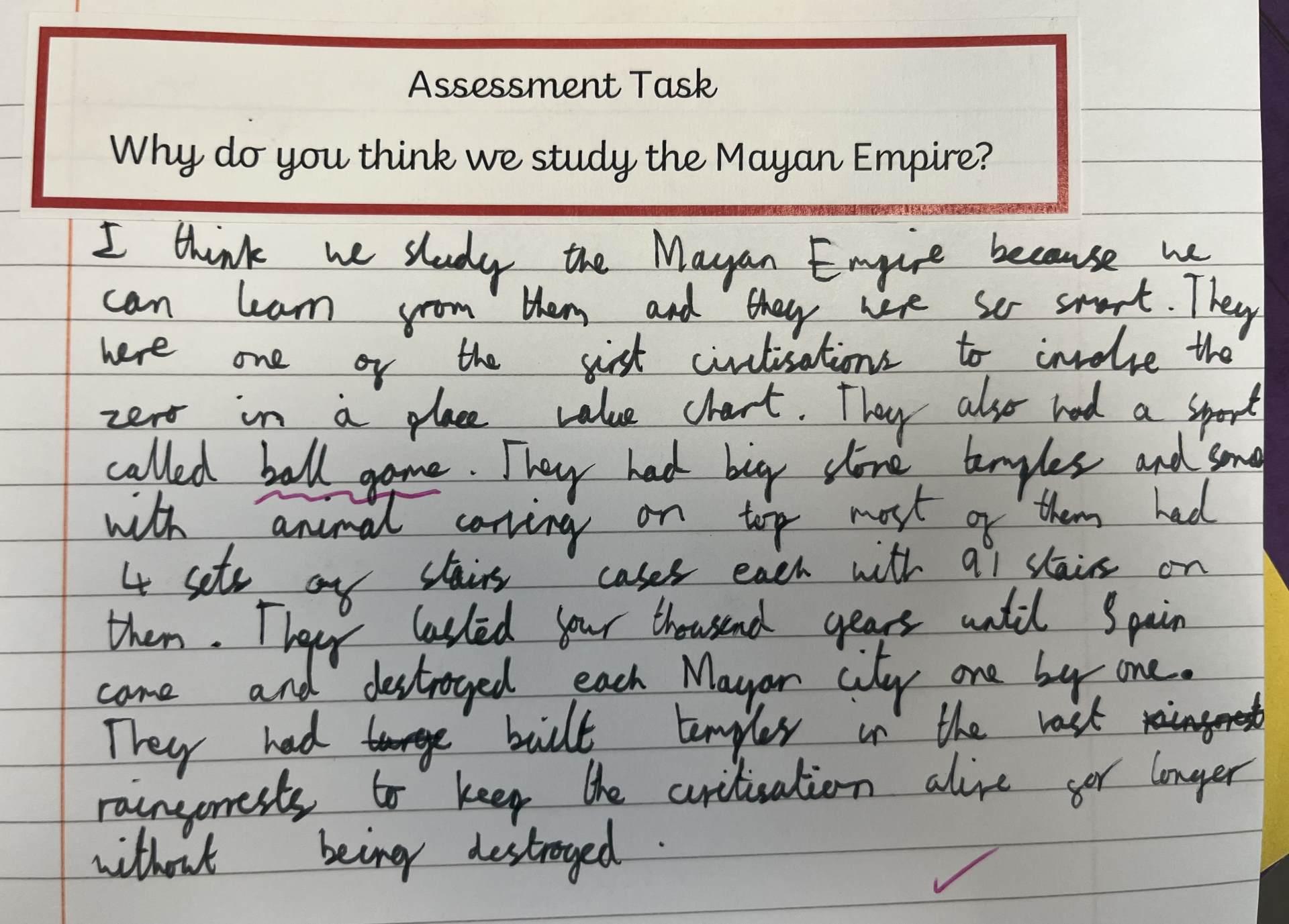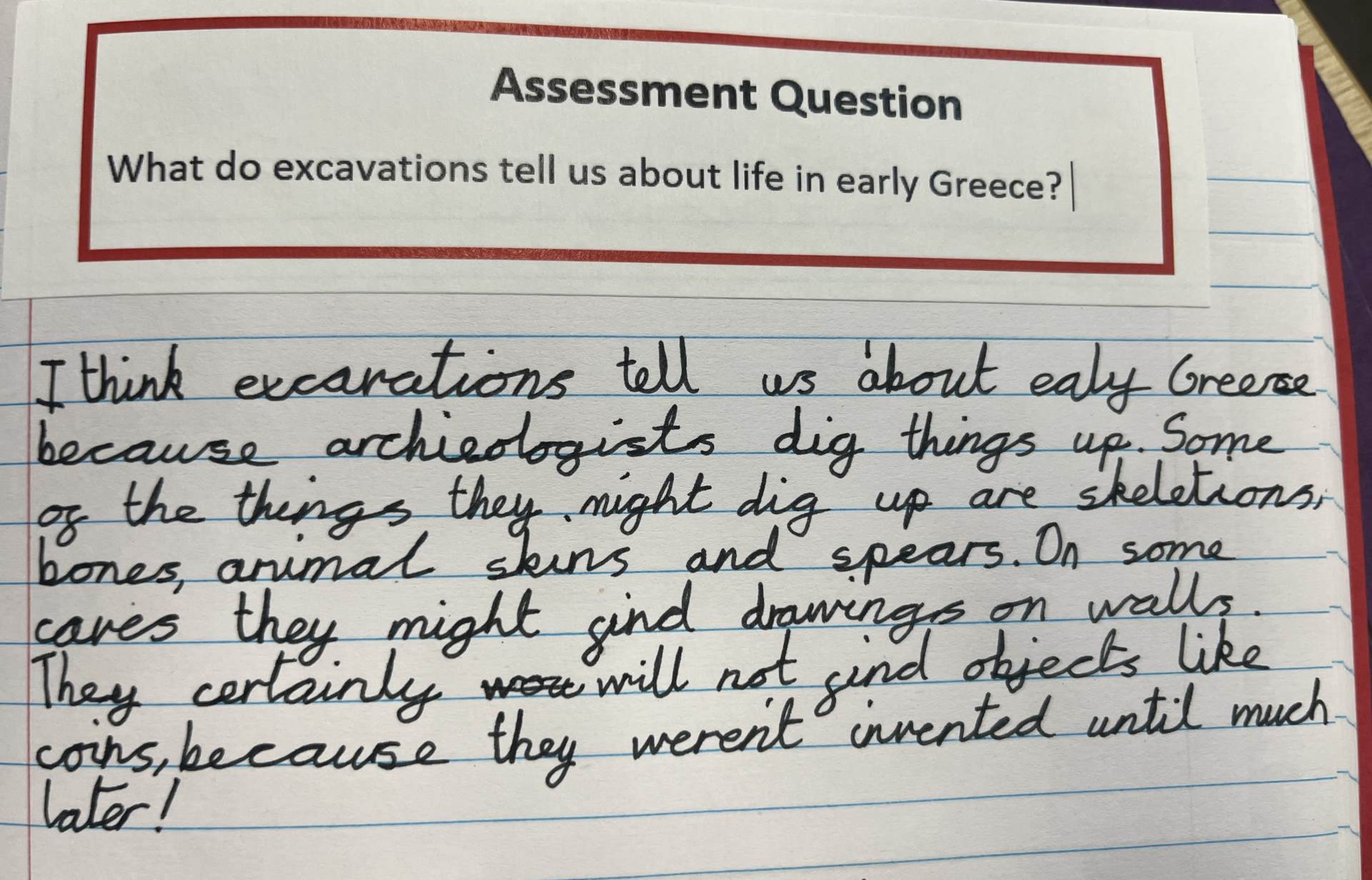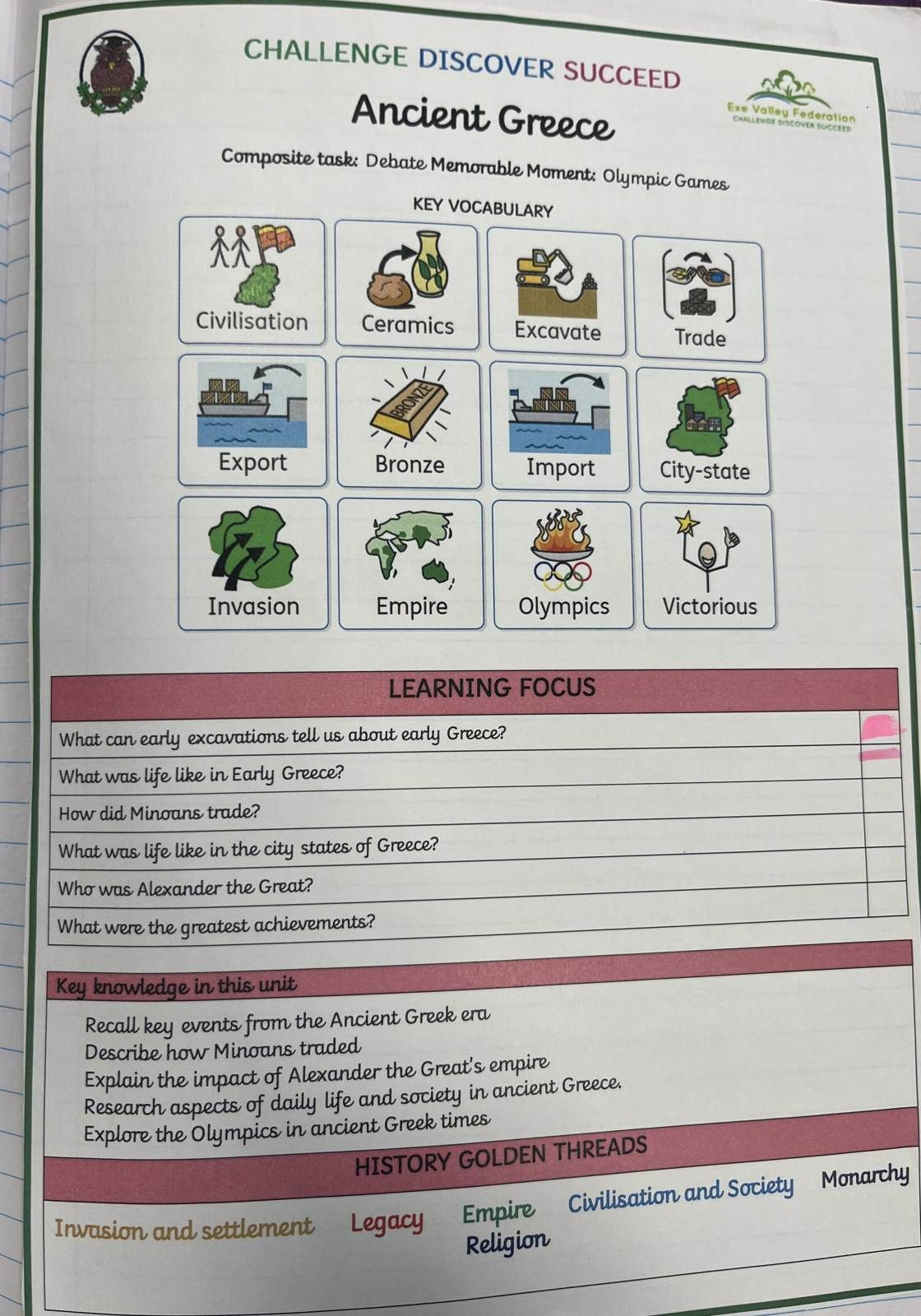Assessment
English
Each unit in our teaching sequences starts with an elicitation task or 'cold task'. This is clearly marked with a blue border. This shows teachers what knowledge and skills children already possess. It is used to inform planning, devise fluid groupings, and set targets. •
Green: This is a new or unknown concept or skill. The child needs more practice.
Blue: The child is demonstrating a secure grasp of this skill or substantive knowledge.
Pink: The child is able to confidently demonstrate or explain this knowledge or skill and can apply this to other contexts.

Through the unit teachers plan and teach lessons focused on the children's needs. The final piece or ‘hot task’ is marked with a pink border. Assessment sheets are completed and positive feedback given!


Mathematics
Teachers use elicitation or formative assessment tasks to identify pupils' prior understanding before teaching new concepts.

Teachers use this information to adapt the teaching sequence, spending more time on small steps which children were less secure in, and challenging children with rich problems to solve in small steps they were more confident in.
Where possible, teachers provide immediate feedback through live/peer/self marking in the moment. When verbal feedback is given changes or edits are evident in purple pen. LOs are highlighted (green, blue, pink) to show understanding.
Green = accessed lesson
Blue = demonstrated secure understanding
Pink = demonstrated deeper understanding, drawing on wider knowledge
Teachers use pre-unit elicitations, diagnostic tasks within lessons, and highlighted LOs to identify pupils who require an additional pre-teach or pick-up. This helps children to keep up rather than catch up. Numberstacks is used to provide additional intervention following elicitation.
We use White Rose end of term assessment to check how well children have retained taught knowledge.
Wider Curriculum
Planning in the wider curriculum identifies key substantive and disciplinary knowledge and breaks the learning down into small steps. These can be seen on the unit cover pages, and on classroom working walls for humanities and science.
•Each unit starts with a link to previous learning, including a recap/assessment on key skills. Lessons start with a recap to previous lesson, and teachers make good use of retrieval practice techniques, such as knowledge organisers, low-level quizzes and vocabulary games.

Each unit's learning is broken down into small steps, each focusing on the component knowledge and skills intended for the unit. These teaching sequences build towards a composite task, where children can showcase their new learning.

Here Beech are teaching Oak about classification as part of their science composite task
During the unit teachers utilise assessment tasks to check children have grasped the key knowledge or skills. Learning objectives are then highlighted and this information is recorded on unit cover pages.





Green = accessed lesson
Blue = demonstrated secure understanding
Pink = demonstrated deeper understanding, drawing on wider knowledge.
For pupils with SEND accessing the class curriculum, these assessments are made against adapted key learning. Teachers address 'green' learning in either pick up small group sessions or at the start of the next lesson.

The classroom working walls offer visual reminders and support for each small step.



